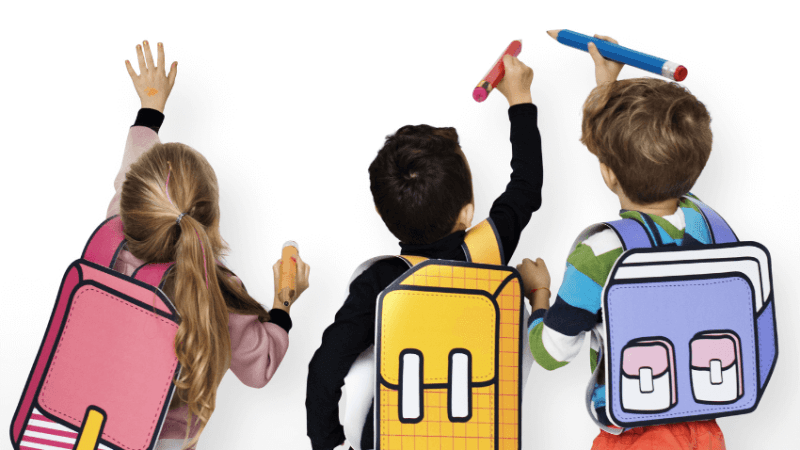Adverbs – Worksheets, examples and games for KS1 and KS2 English
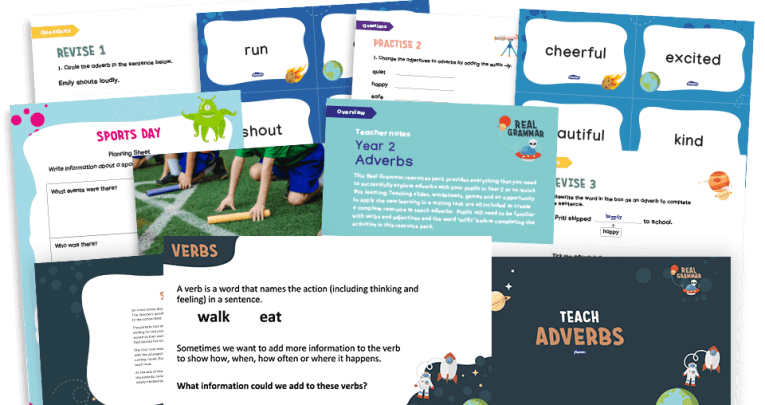
Teach efficiently, explain clearly and have children progress exponentially with these worksheets, lessons and other resources for teaching adverbs in primary school…

- by Teachwire
- Classroom expertise and free resources for teachers

Engage your young learners with our comprehensive guide to adverbs, featuring a variety of worksheets, illustrative examples, and interactive games designed to make your grammar lessons both fun and effective…
What are adverbs?
Adverbs are a fundamental part of speech in the English language. They are words that modify or describe verbs, adjectives, or other adverbs.
Adverbs provide additional information about the manner, degree, frequency, time, place, or certainty of an action or state expressed in a sentence.
For example, in the sentence “She ran quickly,” the adverb “quickly” modifies the verb “ran,” indicating the manner in which she performed the action.
In another example, “He speaks very softly,” the adverb “very” modifies the adverb “softly,” expressing the degree of softness in his speech.
Adverbs can appear in various positions within a sentence. They play a crucial role in conveying precise meaning and adding nuance to the overall message. They help readers or listeners understand how actions are carried out, the intensity of qualities, or when and where events take place.
Outdoor adverb assault course lesson plan

Use this pulse-raising activity from teacher Julianne Britton to inspire LKS2 pupils to generate sentences back in class…
Get children active while improving their understanding of verbs and adverbs. This lesson is most suitable for LKS2 and focuses on generating verbs and adverbs to be used in different ways within an extended piece of writing.
Depending on your timetable and the structure of your lessons, you may need to teach this over two sessions.
What they’ll learn
- Use verbs and adverbs in a range of sentence structures
- Explore spelling rules for past and progressive tense verbs
- Begin to use fronted adverbials
- Add ‘-ing’ and ‘-ed’ suffixes correctly
- Find synonyms and up-level vocabulary
Start here
Give each child a sticky note with a verb on it. Some children will have the past tense version, some will have the imperative and others will have the ‘-ing’ form of the verb (eg ‘jumped/jump/jumping’).
Give pupils a limited amount of time to find the other two children with matching verbs. Once children have correctly identified the different forms of their verbs, display the answers on the board.
This will allow you to discuss some of the different spelling strategies, eg double letter (‘hop/hopped/hopping’), ‘y’ to ‘i’ (‘carry/carried’), removal of ‘e’ (‘move/moving/moved/) and irregular verbs (‘made/ran/sang’ etc).
Main lesson
Obstacle course
Before the lesson, set up several identical obstacle courses, either outside or in the hall. Next, ask children what type of words they were looking at during the start of the lesson.
Recap what verbs are and explain that pupils will be generating and using more verbs today. Split the class into teams and tell the children that they are going to complete an obstacle course using a range of different actions and movements.
At the end of the course, before the next member of the team starts, ask each child to write a verb on a whiteboard or flipchart.
This will create a bank of words for the class to use. Take photographs during the race as evidence for books and to use later in the lesson.
When all teams have finished, discuss the verbs generated and see if children can come up with any adverbs. Explain that they describe how actions are done and often end in ‘-ly’.
Sentence practice
Return to the classroom and ask children to mind-map verbs and adverbs that they could use to describe the race.
They may use words generated during the activity, but can also use word banks and thesauruses to up-level their vocabulary and find synonyms.
Demonstrate how to use these verbs and adverbs in sentences. Start by using the adverb within the main sentence, eg ‘I quickly jumped in and out of the hoop’.
Next, discuss using an adverb to start the sentence, eg ‘Loudly, the other children cheered for me as I crossed the finish line.’
Finally, discuss starting sentences with the ‘-ing’ form of a verb, eg ‘Zig-zagging between the cones, I began to think we could win’.
After you discuss each sentence structure, ask the children to come up with their own example. They should say it out loud to their partner before writing it down.
Race recount
Now, recap the various parts of the obstacle course. If possible, display photographs on the board as a reminder. Task the children with writing a recount of the race using the verbs and adverbs they have previously generated.
They should practise using the different sentence structures discussed earlier in the lesson. Share a model text as an example.
Provide support to children in the form of word banks, images and sentence starters. Challenge more able pupils to include further details about thoughts and emotions.
Charades
To end the lesson, play a game of verb/adverb charades. Pairs of pupils can take it in turns to pick a verb and an adverb and act them out.
The rest of the class will try and guess both the verb and the adverb. When making their guess, they must say, “Is the verb …?” or “Is the adverb…?”.
This is a fun way to solidify children’s understanding of what verbs and adverbs are. The two children who guess both words correctly can then take their turn.
Extending the lesson
- Having already started to discuss sentence structures, this is a good opportunity to discuss fronted adverbials in more detail in further literacy lessons.
- To secure pupils’ understanding of verbs and adverbs, refer to them during PE lessons and ask children to identify them.
- To look at verbs and adverbs in a different context, discuss them during a cooking or technology lesson. Children could use the imperative form of the verb to write a recipe or set of instructions.
- After completing the obstacle course, ask children to create a ‘get fit’ leaflet encouraging people to exercise and explaining the benefits. This is another great opportunity to use verbs and adverbs in another type of text.
Useful questions to ask
- Can you find a synonym for that verb?
- What activities did you do in the obstacle race?
- Can you start a sentence with an ‘-ing’ verb or an adverb?
- How can you turn this verb into its past tense form?
Julianne Britton is a qualified teacher and an author of educational resources. She also offers private tuition services.
George’s Marvellous Medicine lesson plan

Teach children about adverbs with this adverbs list lesson plan that includes an activity sheet of ‘absolutely awful adverbs’ examples from Roald Dahl’s classic book.
Trending
Then see how your class can take what they’ve learnt about adverbs and apply this to a piece of persuasive writing – including coming up with their own advertising slogans.
Year 2 adverbs resources
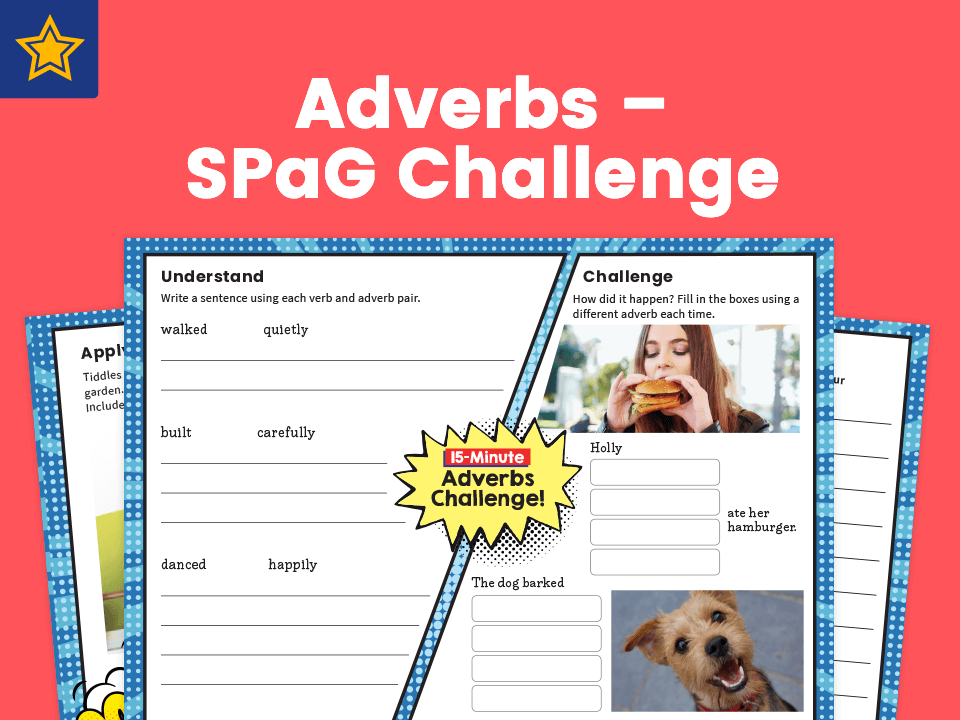
This Year 2 review mat from Plazoom is an excellent way to revise and practise using adverbs. The worksheets are divided into five different types of activity, including writing challenges and GPS sample test questions.

This Real Grammar resources pack from Plazoom provides everything you need to teach adverbs in Year 2, or revisit the topic with older pupils. You get slides, worksheets, games and a suggested writing task.
Year 3 adverbs resources
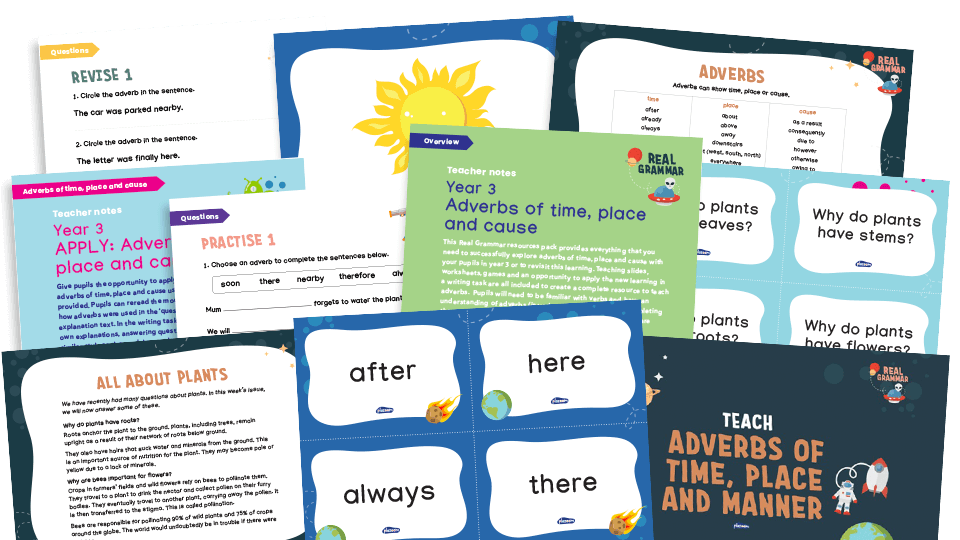
This Real Grammar resources pack will help you explore adverbs of time, place and cause with Year 3 pupils.
It includes slides, worksheets, games and an opportunity to apply the new learning in a writing task themed around plants.
Year 5 adverbs resources
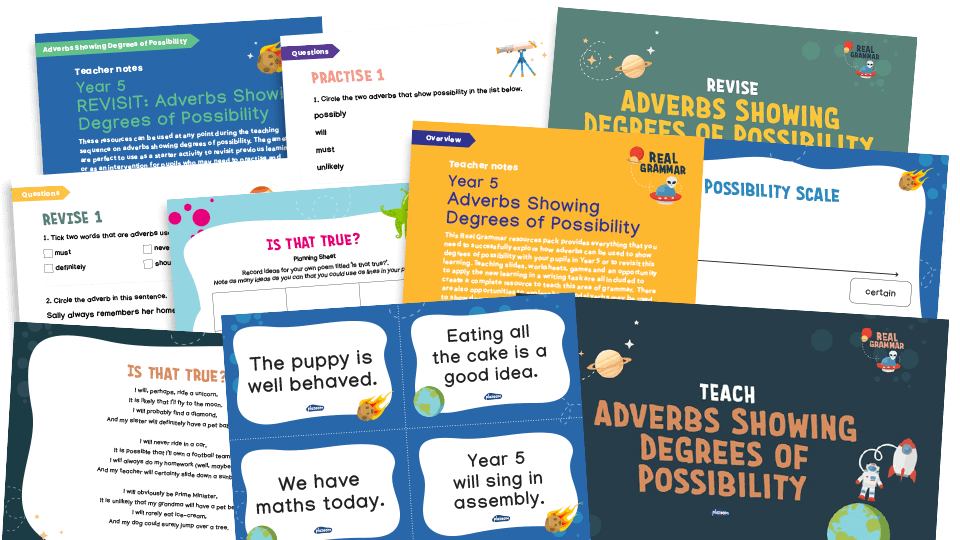
Use this Real Grammar KS2 resources pack to show Y5 pupils how adverbs can be used to show degrees of possibility.
As ever, you’ll get teaching slides, worksheets, games and a suggested writing task.
Year 6 adverbs resources

This KS2 grammar teaching sequence for adverbs has been designed to help children revisit and remember a key grammatical concept from the National Curriculum programme of study.
The session provides a motivating and memorable image to stimulate discussion, before introducing the grammar element. Children have time to practise using this feature, before undertaking a short writing task to apply what they have learnt in the context of creative writing.
The resource includes teacher notes and a pupil worksheet.
More adverbs resources
Add adverbs to Paddington

Inside this mammoth Paddington Bear resource you’ll find an activity worksheet where children get to add some adverbs to a range of Paddington-themed sentences, as well as write their own sentences using them.
The whole pack from HarperCollins was created to celebrate 60 years of A Bear Called Paddington, and is a whopping 39 pages. Better yet, it’s all free.
Instructional writing with The BFG
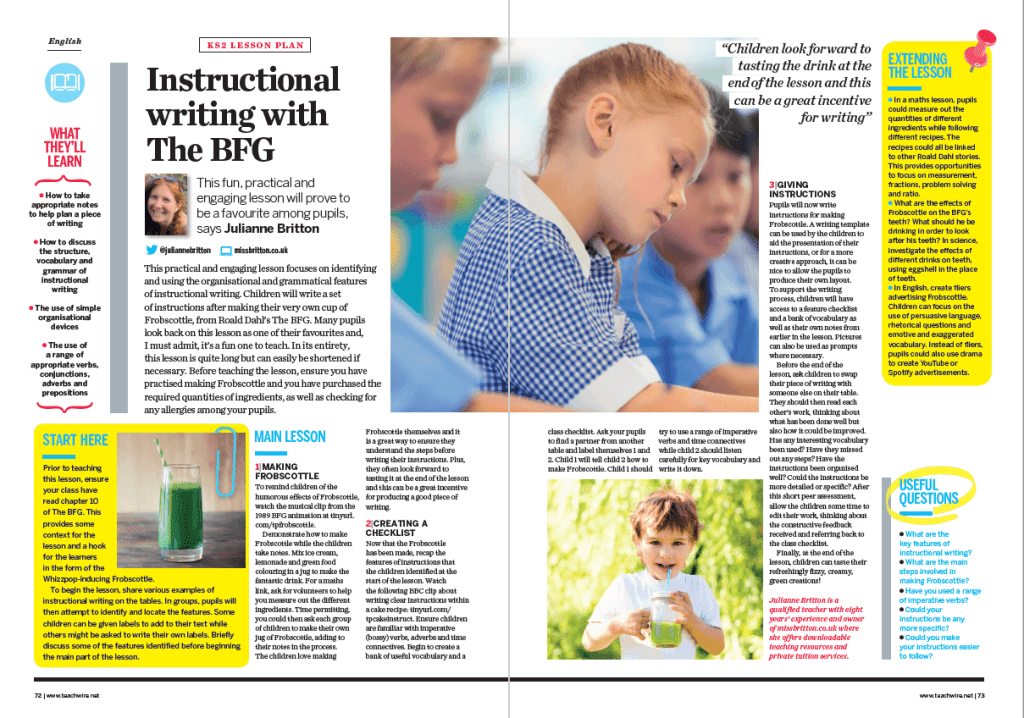
This fun, practical and engaging Roald Dahl lesson from Julianne Britton focuses on identifying and using the organisational and grammatical features of instructional writing.
KS2 children will write a set of instructions after making their very own cup of Frobscottle, and learn about the use of a range of appropriate verbs, conjunctions, adverbs and prepositions.
Adverb posters and cards
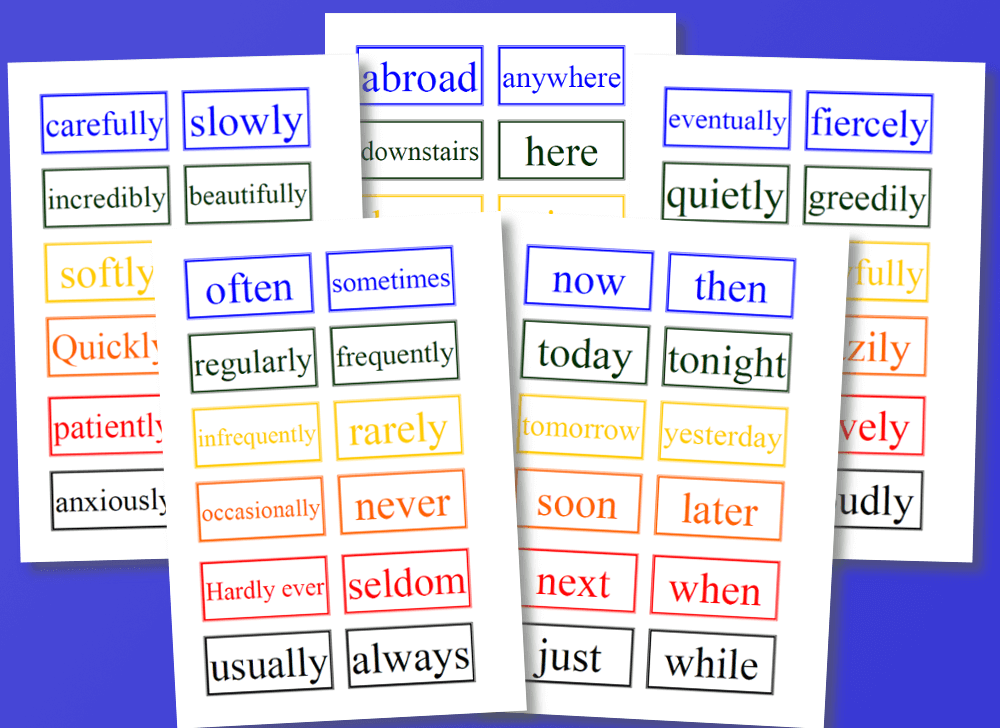
This dual-purpose PDF features five pages of brightly coloured adverbs. Print them off and display them as posters, or cut them out to have a whole collection of adverb cards.
Making adverbs by adding -ly
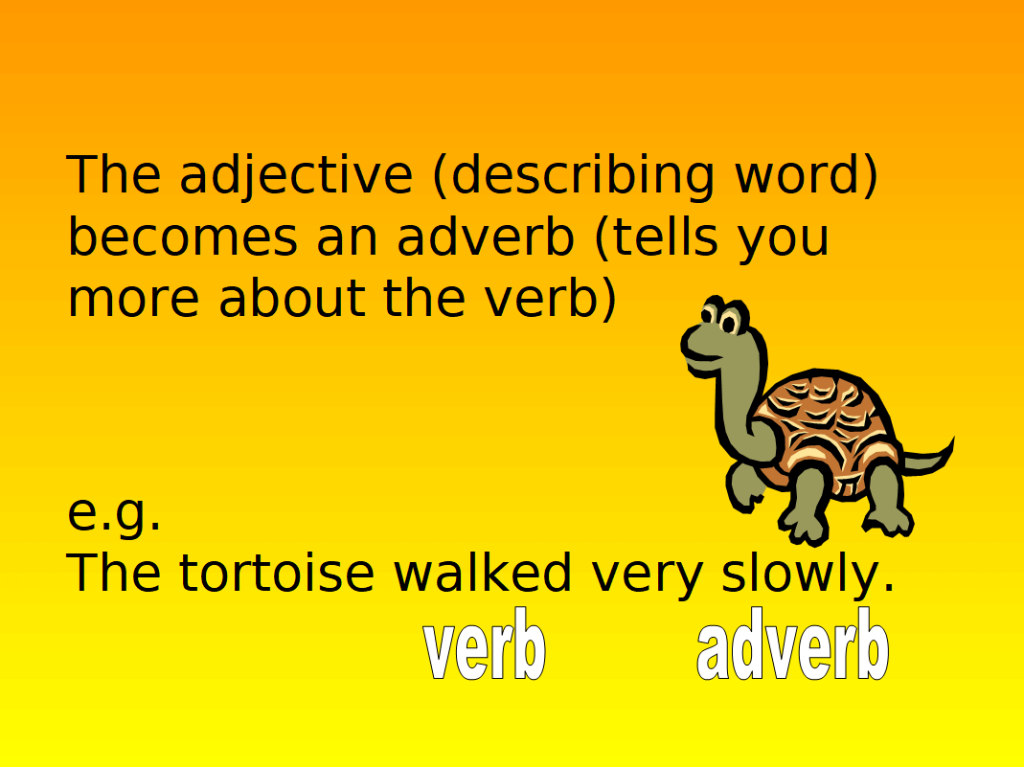
The short five-slide ‘Making Adverbs (adding ly)’ PowerPoint presentation on this page is a nice introduction to creating adverbs by adding the suffix -ly.
There is a list of words for children to quickly practise the rule, a description of how this turns an adjective into an adverb, an explanation of when a word already ends in ‘y’ (like sleepy) and some questions on adding adverbs to fill in the blanks in sentences.
KS1 adverbs quiz

This short 10-question quiz can test children’s knowledge of adverbs to see if they’ve grasped the concept.
And the question types vary slightly; some will ask them to pick out the adverb in a sentence, others will ask ‘which of these words is not an adverb?’, for example.
How to teach adverbs in KS2

Adverbs may seem a complicated subject, so Headstart Primary enlisted the help of experienced English grammar and punctuation teacher Clive Stack to break it down. Here is Clive’s simple approach for teaching them to Key Stage 2.
Adding adverbs to a story
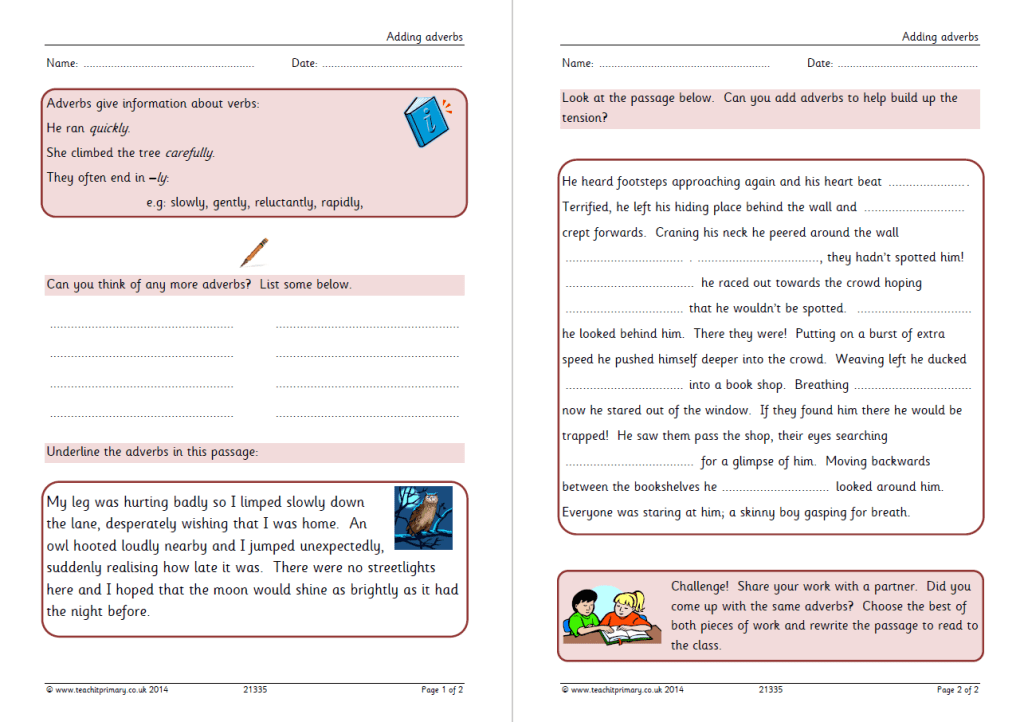
This worksheet is aimed at Year 5 and 6, and gets children to use adverbs to improve their writing.
First they need to identify adverbs in a short passage, then add them to a longer passage to build tension.
Use adverbs in Gothic fiction

This Year 5 resource pack from Hamilton Trust introduces students to Gothic fiction through Chris Riddell’s Goth Girl.
In it they will look at the features of Gothic fiction, use adverbs to add to the Gothic style, compose Gothic characters, improve and punctuate dialogue, write a new chapter in the Gothic style and much more.
Fronted adverbials resources
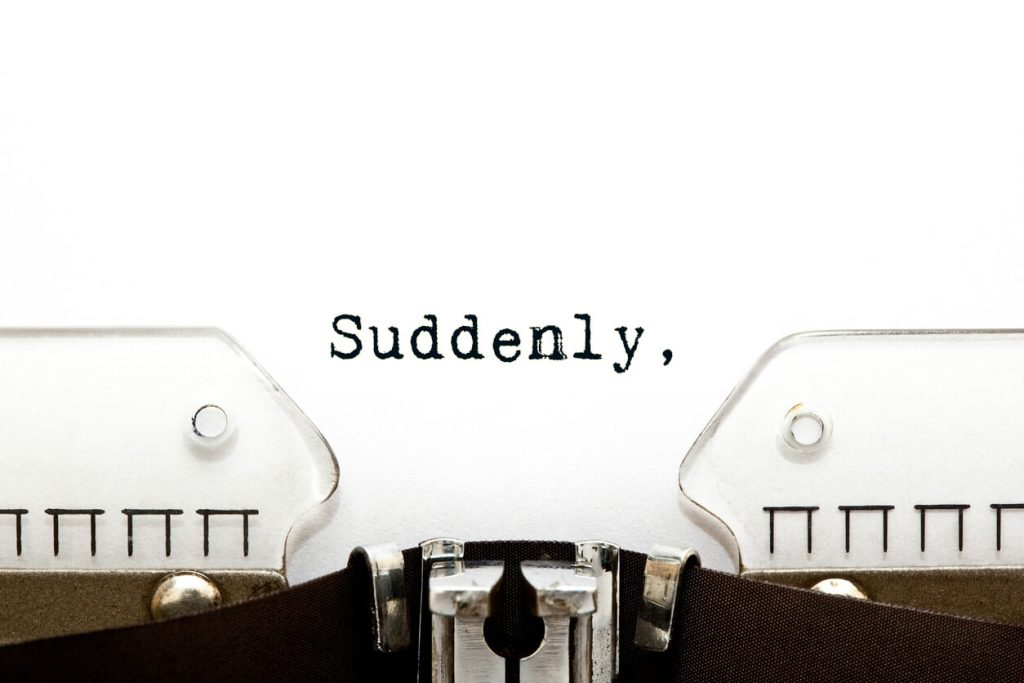
Want to move on to something a little more complex? We’ve got a 9 of the best worksheets examples and resources on fronted adverbials for KS1 and KS2.






